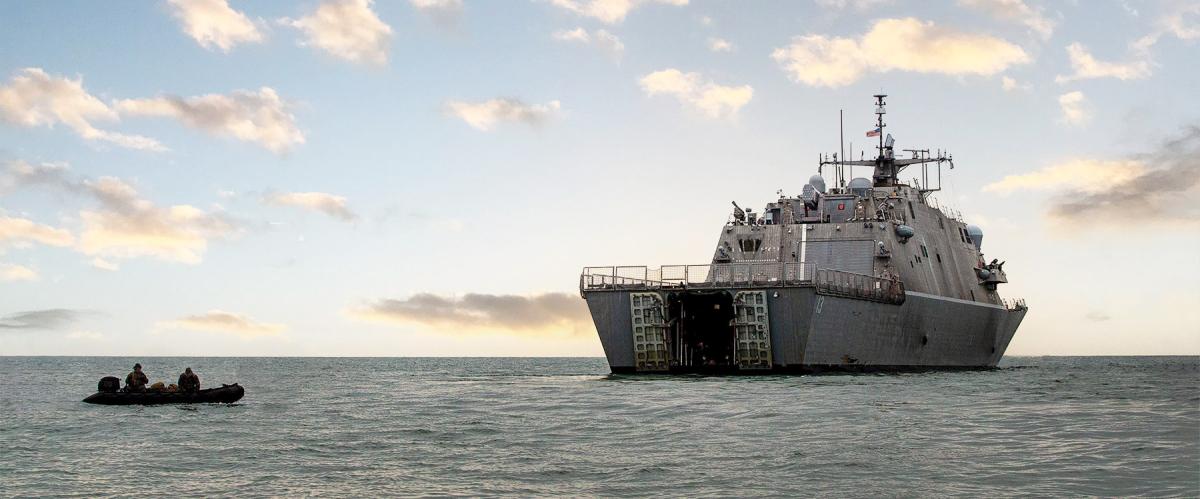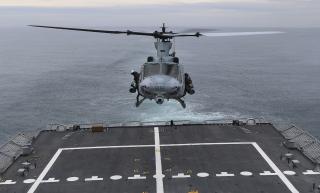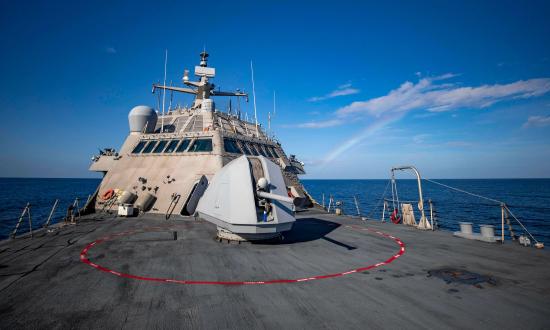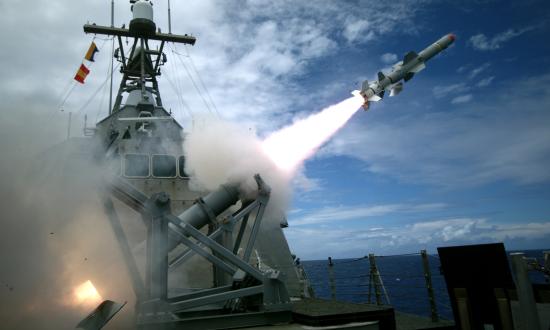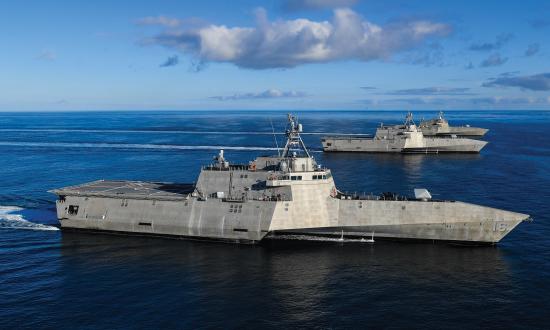To secure U.S. global influence and superiority in the current great power competition, the Navy must use littoral combat ships (LCSs) in support of and during combat operations. A recent Navy–Marine Corps exercise provided a glimpse of the LCS’s potential to play a critical role in future naval campaigns designed specifically to counter malign Chinese, Russian, and Iranian activities.
However, achieving this potential requires fully embracing the “littoral” in LCS. The Navy–Marine Corps team’s role in renewed great power competition has not been clearly articulated, as House Armed Service Committee members Representatives Elaine Luria (D-VA) and Mike Gallagher (R-WI) have often noted.1 The intensifying competition between the United States and its adversaries includes competing views on the rules that should dominate the global maritime commons, especially in the critical maritime straits through which more than 80 percent of world trade passes.
Littoral Exercise I
Much depends on how quickly and aggressively the Navy and Marine Corps implement innovative approaches to provide long-term security to the regions of the world essential to U.S. economic power. In the recent Navy–Marine Corps Littoral Exercise (LEX) I, the Freedom-variant LCS USS Wichita (LCS-13) demonstrated its potential to play a major role in upcoming naval campaigns.
From 23 to 27 January 2022, the Wichita and elements of the 2d Marine Division conducted a distributed littoral exercise spread between Key West, Florida; Parris Island, South Carolina; and Atlantic Airfield, North Carolina. During the exercise, sailors and Marines were challenged to counter adversary threats similar to those activities demonstrated by China’s People’s Liberation Army Navy (PLAN) in the South China Sea and Taiwan Strait, Iranian proxy military forces in and around the Bab el-Mandeb Strait, and Russian military forces in the northern Black Sea.
During LEX I, the Wichita embarked Marines from the 2d Light Armored Reconnaissance Battalion and 2d Reconnaissance Battalion with two combat rubber raiding craft (CRRC). Together, the sailors and Marines successfully executed a series of “firsts” for the Freedom-variant LCS, all of which proved effective. For example, a small five-Marine command-and-control (C2) element operating from the Wichita’s mission command center (MCC) helped fuse the actions of the distributed Marine units ashore, significantly increasing the ship’s maritime domain awareness.
In addition, for the first time in LCS program history, reconnaissance Marines were employed via CRRCs from the Wichita’s waterborne mission zone. With the ship’s 11-meter rigid-hull inflatable boat acting as a safety vessel, they gained entry onto a key terrain feature that provided observation of adversary activities. Once ashore, the Marines set up an observation post to track a vessel at sea simulating a “mothership” transferring arms and ammunition ashore. The Marines ashore fed the intelligence back to the Wichita’s MCC, which enabled the Marine C2 element to execute multiple strikes against the adversary vessel. Finally, a Marine UH-1Y Venom helicopter landed and refueled on board the Wichita, and the commanding general, 2d Marine Division, visited with his Marine forces and the Wichita’s crew.
While small in scope, this first Navy–Marine Corps LEX proved that the Freedom-variant LCS has great potential to help implement a viable new naval campaigning approach. By pairing dedicated sailors with rapidly deployable, mobile, platoon-sized Marine Corps forces capable of reconnaissance and counterreconnaissance operations, the Navy and Marine Corps can significantly contribute to deterring adversary activities and seizing the initiative. The Freedom-variant LCS has now operated with both naval special warfare 11-meter boats and Marine Corps CRRCs at sea. Whether operating as an afloat staging base or as an enabler for expeditionary advanced base operations, the LCS can bring real value to the fleet commander.
In addition to exercising all the capabilities of the LCS multimission packages, exercises such as the LEX must become routine for the Freedom-variant LCSs. Only through sustained, repeatable interactions can LCS crews and their Marine Corps or special operations forces counterparts build the corporate knowledge of interoperability essential to employ these littoral-interdiction skills in real-world operations. Freedom-variant LCSs offer great opportunities and flexibility to the fleet. In addition to supporting naval special warfare and Marine Corps operations, they are ideal platforms for intelligence, surveillance, reconnaissance, mobile expeditionary support, or any other enabler that can be containerized and placed on board a ship. Naval planners should view the LCS as a utility platform—multipurpose in scope for key enabling missions and not confined to distinct mission packages.
1. HON Elaine Luria, “Look to the 1980s to Inform the Fleet of Today,” War on the Rocks, 14 June 2021; and HON Michael Gallagher, “Changing Course: Making the Case (Old and New) for American Seapower,” Texas National Security Review 1, no. 2 (February 2018): 116–27.



